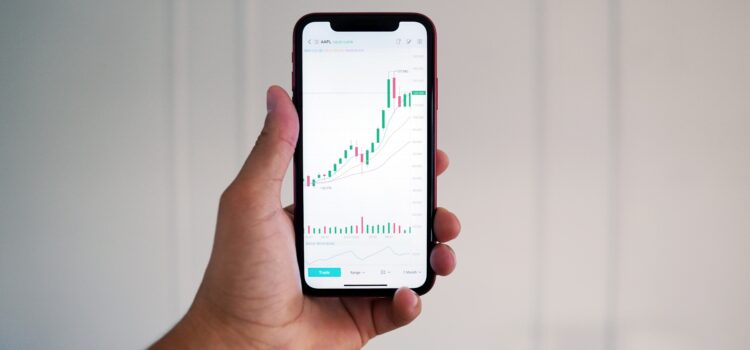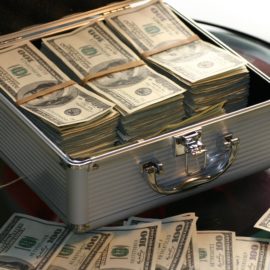

This article is an excerpt from the Shortform book guide to "The Intelligent Investor" by Benjamin Graham. Shortform has the world's best summaries and analyses of books you should be reading.
Like this article? Sign up for a free trial here .
What are bargain stocks? Is buying bargain stocks a good investment strategy?
Bargain stocks are stocks that belong to companies that still have value, but the company has fallen out of favor. Buying bargain stocks can be a great investment strategy.
Read more about bargain stocks and when to invest in them.
Bargain Stocks
Finding the best bargain stocks is Graham’s preferred method. Here’s the general idea: markets are made up of people who are impulsive and follow each other. This can cause major fluctuations in price (both up and down) that are irrational, based on the stock’s underlying value.
When a company has fallen out of favor, its price will drop below what the fundamentals of the company would warrant. The stock has now become a bargain—if you buy them, they may later recover their prices and be good investments.
Graham defines a bargain as a stock that has a real value of at least 50% more than the current price. In other words, the price is below two-thirds of the stock’s value.
How do you calculate the stock’s value, then? Two methods:
- Take the company’s future earnings and multiply these by a factor relevant to the company and industry. (Shortform note: a related method is discounted cash flow.)
- Estimate the value of the business to a buyer. This value might generally be similar to the future earnings method, but more attention might be paid to the value of assets.
To be more concrete, Graham shares a few flavors of the best bargain stocks.
The Unpopular Large Company
Large companies with a history of good performance and a sound position are like large, steady ships: they can weather many storms, since they have the resources to work through sudden problems and bad macroeconomic conditions.
However, these companies might fall out of favor in the market because of bad news (like a small scandal or a news report). The market may overreact, thinking that the news reflects a permanent, irrecoverable loss in the value of the company. In reality, the large companies can recover quickly, and the market may regain confidence in it quickly given the company’s strong track record.
Here are a few examples:
- In October 1982, seven people in Chicago died from Tylenol laced with cyanide. The parent company Johnson & Johnson (J&J) saw its stock fall by 17.5%, but within the year it introduced new tamper-proof packaging. Tylenol regained its market leader status, and J&J quickly regained its share price and became a strong growth stock through the 1980s.
- Similarly, in July 2002, J&J announced a federal investigation into record keeping at one of its factories, and its stock price fell 16% in a day (taking its price-to-earnings ratio from 24 to 20). It recovered its price within a few weeks.
- In 2002, the cruise ship operator Carnival lost 10% of its value when news came out of tourists getting sick on the ships of other companies.
Beware, however, that not all companies can recover from bad news. Some companies may start trading at an apparent discount and indeed show a permanent loss in stock price. These are not the best bargain stocks to invest in.
How do you identify companies that can weather the storm?
- It should have stable earnings over the past 10 years or more.
- It should be large enough and have strong enough finances to overcome future problems.
Untraditional Earnings
Some companies may have accounting idiosyncrasies that obscure its real earnings potential. Graham cites Northern Pacific Railway, which had real earnings in 1947 of $10 per share but had a stock price of $13.50, because railroad companies used accounting methods that underestimated its earnings potential.
Value Less Than Net Working Capital
At times, a company’s market capitalization may be lower than its net working capital (current assets minus current liabilities). This is an odd situation, since it suggests a buyer could buy the company and get all its fixed assets (property, equipment) and goodwill for free.
Very few companies are truly in such a poor situation that it should be worth less than net working capital, so more likely it has simply fallen temporarily out of the market’s favor.
Secondary, Non-market Leader Companies
The large market leader of an industry tends to be a “blue chip” type of stock, with relatively predictable stock price performance. The secondary companies, or companies who are not market leaders, have a more lopsided potential—they are smaller and thus more at risk of failing, but, being smaller, they are able to grow faster than large companies.
Therefore, secondary companies are more susceptible to the current market fashion. The fashion has oscillated over time:
- The Great Depression in the early 1930s was especially harsh to secondary companies, so the market avoided them for decades, preferring the stability of large market leaders.
- After World War II, the economic boom benefited all companies but was especially kind to smaller companies, which had more room to grow. Thus small company stocks grew faster than large company stocks, and they became fashionable.
- Each boom and bust cycle tends to show this pattern. In times of technological hype, as in the 1960s with electronics and computer companies, the small startup companies tend to have wildly inflated values.
The key, then, is to invest when secondary companies are out of fashion, when the market believes they are headed to extinction. In reality, this is an overreaction—secondary companies are often solid businesses on their own right, and they may be comparable in size to leaders in smaller industries. Thus there’s no general reason they shouldn’t have an equal chance of longevity as larger companies.
Graham explains why bargain stocks are a great investment and encourages readers to look into the best bargain shares.

———End of Preview———
Like what you just read? Read the rest of the world's best book summary and analysis of Benjamin Graham's "The Intelligent Investor" at Shortform .
Here's what you'll find in our full The Intelligent Investor summary :
- Key advice from what Warren Buffett considers the "best book about investing"
- The 2 major indicators you should use for evaluating stocks
- How you can use aggressive or defensive investing strategies






